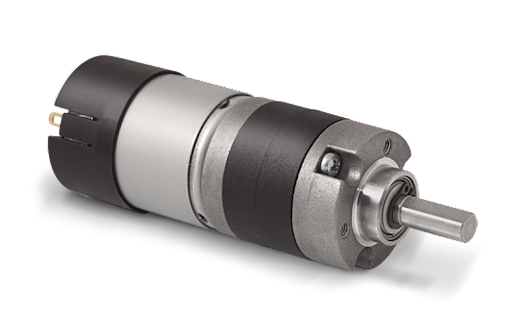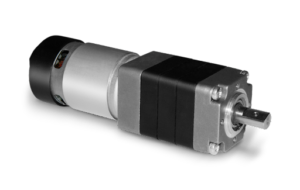Planetary gear motors are used in different application areas and for various purposes, especially in industrial automation systems. In this article, we will analyze all their characteristics and advantages.

Planetary gear motors are special components for the transmission of motion and power, consisting of a series of gears whose purpose is to increase the torque in electromechanical systems by decreasing the speed of rotation.
Where high output torque is required, they are one of the most efficient solutions. For example, planetary gear motors are frequently used in automated machines, to increase the motor torque and achieve the performance suitable to the various operational needs.
What is a planetary gear motor?
First of all, let us see what a planetary gear motor is. It consists of a motor and a planetary gearbox and it is composed of a central sun gear, planet gears or satellites mounted on a carrier plate, and a fixed outer ring gear. In planetary gearboxes, the number of teeth of the planet gears (satellites) has no bearing on the reduction ratio but merely transmits the required torque. The term “planetary” derives from the type of rotation of the gears which resembles the movement of the planets in the solar system.
The number of satellites can vary. Planetary gearboxes, depending on the reduction ratio, can have one, two, three, or four stages (i.e., multiple levels of gears). The greater the number of stages, the higher the reduction ratio of the gear motor. Planetary gear motors with a low number of stages provide limited torque and higher speed, conversely, planetary gear motors with more stages result in higher torque and lower rotational speed but increase the total length and lower the mechanical efficiency.
What is the function of a planetary gear motor?
A planetary gearbox has the function of changing the speed relation between the input shaft and the output shaft, distributing the load over several planet gears. The central sun gear fixed on the motor input shaft drives the planet gears that simultaneously transmit torque to a rotating carrier plate connected to the geared output shaft.

Use and applications of planetary gear motors
Planetary gearboxes are used in automated areas and machines, in particular in packaging machines, conveyors, printing machines, and in any context where positioning must be controlled in a precise manner. Planetary gearboxes are recommended in dynamic applications within the robotics industry, where details such as reduced backlash and more balanced load distribution are highly valued, to ensure longer system life.
The same is true in fields that require high torque at low speeds, such as industrial antennas and elevation or locking systems, as these elements can generate a much higher torque than standard gearboxes.
The advantages
- Greater strength and better efficiency: the main characteristic of a planetary gearbox is to develop more torque in the same space compared to a conventional spur gearbox. This is possible since more gears work simultaneously on the outer ring gear, generating the same torque output in a smaller dimension.
- Reduced backlash: the backlash is the measure of position accuracy, resulting from the mechanical play between the teeth of the gears.
Micro Motors’ planetary gear motors are equipped with double ball bearings that allow for greater radial load and avoid seizure problems. Micro Motors can also supply planetary gear motors with encoders to control positioning, speed, and direction of rotation.
In the evaluation of a planetary gear motor, it is important to choose the most suitable features to obtain the required performance for your electromechanical system, such as size, play, and type of use, or opt for customized solutions to be used in particular contexts.


